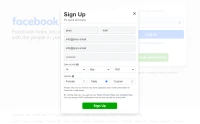Comprehensive Guide to Email Localization in Marketing
15 Oct 2024

Email localization is a practice that includes in-depth adjustment of email campaigns to fit the audience outside of the brand’s home region. Put simply, it is the process of tweaking certain campaign elements to make sure that subscribers abroad get emails in their preferred language that are also relevant, easy to understand, and culturally appropriate.
Email localization is a part of email marketing management for businesses that operate in more than one country. Email localization is a narrower concept than multilingual email marketing, because it is just one part of preparing and launching multilingual campaigns. But localization itself is also a multi-step process that goes further than content translation and considers language specifics, cultural differences, national calendars, and more.
We are going to discuss all these aspects in more detail. But before that, let us zoom in on why localization matters in the first place.
The importance of localization in marketing is not just an assumption. There is a wealth of research data that indicates, directly and indirectly, how content localization makes international marketing campaigns more effective.
Here are just a few numbers:
- While there are around 5.44 billion internet users in the world, only half of web content worldwide is in English. Also, the country with the largest number of internet users in the world, as of 2023, was China with 1.050 million users.
- In 2023, English was spoken by 1.456 million people. At the same time, there were 1.138 million speakers of Chinese Mandarin, 609.5 million speakers of Hindi, and 559.1 speakers of Spanish around the globe.
- 64% of technology buyers surveyed by Forrester said they value localized content when buying technology items.
- 76% of consumers across 29 countries would rather purchase products with information provided in their native language. 40% of them also said they won’t buy at all if product information is in another language.
- 75% of buyers across these 29 countries also indicated they were more likely to repeatedly purchase from a brand that provides customer care in their language. (SCA)
Also, there are a number of case studies indicating that localization in marketing really works.
That’s why more and more organizations around the world are leveraging localization. This practice can come in handy in every industry, be it email marketing for schools where they need to attract international students, email marketing for global e-commerce companies, or email marketing for small businesses trying to find new customers abroad.
However, one might think it sufficient to simply translate content from one language to another or to a bunch of them. But as mentioned earlier, localization is not as simple as that.
To understand the difference between translation and localization in general, let’s draw an analogy.
Most people love movies, and most of them know how crucial localization is in the film industry. From movie titles and taglines to dialogue, it is localization that makes movies make sense across languages and cultures.
That is also why many film titles are unrecognizable in foreign languages. For example, the title “Silver Linings Playbook” makes perfect sense in English but if you translate it into Spanish word per word, the equivalent would be “libro de estrategias del lado positivo”
hich is hardly an enticing movie title. So hat movie is called “El Lado Bueno de las Cosas” in Spanish, which roughly means “the bright side of things”. Although this title differs from the original, it captures the essence of the film’s idea, looks well, and is easily understandable to Spanish-speaking audiences, which increases the probability of them seeing and appreciating the film.
Even the movie posters look differently depending on the market they are intended for. In the collage above, the English-language one uses a grayscale palette and a tagline that reads “Watch for the signs”. The Spanish version features a colored image and a tagline “al amor duele” (“love hurts”). This is also part of localization because Spanish-speaking audiences are considered to be more emotional.
This is basically how localization works in email marketing too: it makes your messages make sense to audiences abroad and feel relevant to them. To achieve that, you need to consider things like cultural references, traditions, audience preferences, design, and visuals.
Take a look at this collage of multilingual emails by NARS Cosmetics for its Japanese, Brazilian, and German markets. Although the products are similar, the emails feature different images.
Localized email campaigns are practically impossible without structuring your audience. To leverage email geotargeting based on your customers’ location and ensure that each customer gets campaigns most relevant to them, segment your email list. You can create segments according to common characteristics such as language, country, or region.
Another challenge with local lists is that countries have different policies on processing and storing personal data. It is especially relevant in Europe where they have a special regulation called GDPR. This regulation makes managing email lists with contacts in the EU more challenging since you might not be able to use some data for your local marketing campaigns.
Email localization is an important part of international marketing campaigns. If done right, it can help you win more customers, make your brand stronger, and bring in more profit.
For your localization efforts to pay off, steer clear of common pitfalls, learn to overcome challenges, and follow the basic steps to successful email localization outlined in this article. Also, make sure you choose the best email marketing service for your needs to facilitate the process. And, of course, remember that practice makes perfect.






